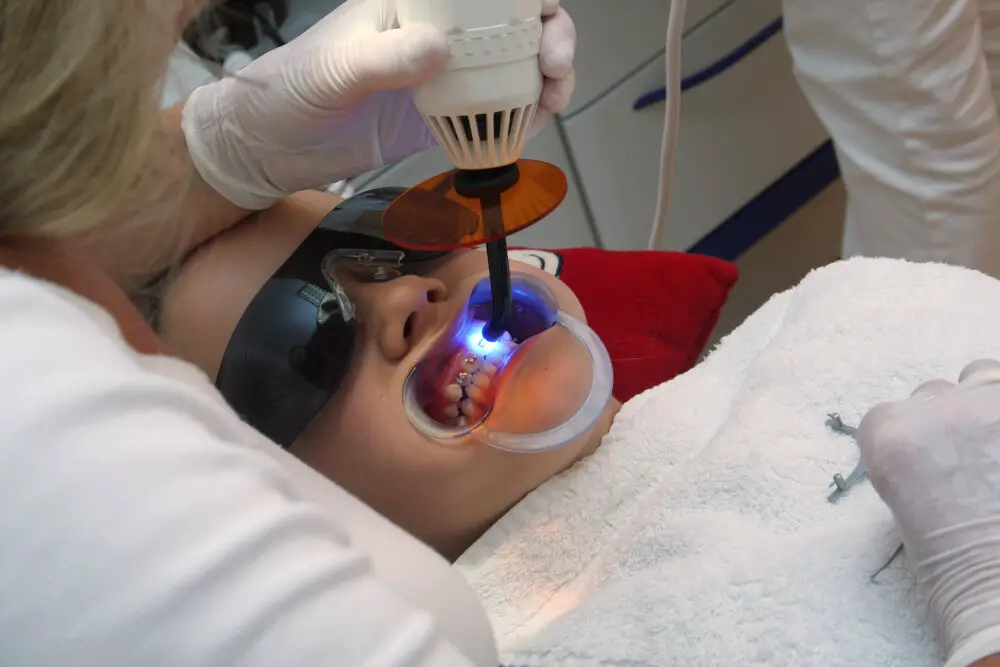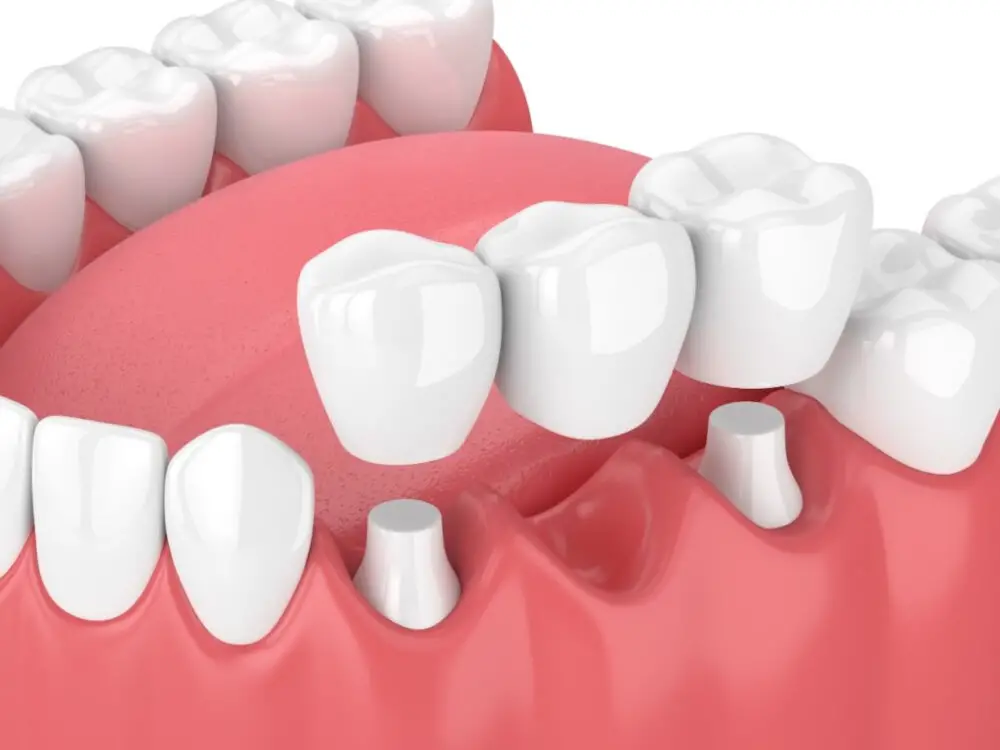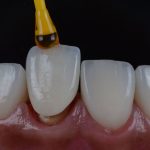Wisdom Teeth Extraction: Understanding the Anesthesia Options

Wisdom teeth extraction can be a daunting experience for many individuals, especially if it’s their first time undergoing the procedure. One of the main concerns that patients have is the type of anesthesia that will be used during the surgery. Anesthesia is necessary to ensure that patients remain comfortable and pain-free throughout the entire procedure. However, there are a variety of anesthesia options available, each with their own benefits and risks. It’s important for patients to have a clear understanding of the different types of anesthesia and the potential side effects before making a decision. There are generally three types of anesthesia that can be used during wisdom teeth extraction: local anesthesia, general anesthesia, and sedation anesthesia. Local anesthesia involves numbing the area around the tooth being extracted with an injection. This type of anesthesia is typically used for simple extractions and is ideal for patients who want to remain awake and alert during the procedure. General anesthesia involves putting the patient to sleep during the surgery. This type of anesthesia is usually reserved for more complex extractions or for patients who have severe anxiety or phobias. Sedation anesthesia is a type of anesthesia that involves administering medication to help the patient relax and feel drowsy. This type of anesthesia is often used in conjunction with local anesthesia to help patients remain calm and comfortable during the procedure.
Wisdom teeth extraction is a common surgical procedure performed by dentists or oral surgeons to remove the third molars located at the back of the mouth. These teeth often cause pain, infection, or damage to adjacent teeth due to their misalignment, size, or impaction. The extraction process involves making an incision in the gums to access the tooth, removing any bone blocking the tooth’s root, and finally separating the tooth from the bone and ligaments holding it in place. Depending on the complexity of the case and patient’s preference, there are different anesthesia options available such as local anesthesia, nitrous oxide, oral sedation, and general anesthesia. Each method has its benefits and risks, and the dentist will choose the most suitable one for the patient based on their medical history, anxiety level, and treatment needs.
It is crucial to understand the various anesthesia options available during wisdom teeth extraction. Anesthesia ensures that the patient feels little or no pain during the procedure, allowing the dentist to work without interruption. The different types of anesthesia available include local anesthesia, nitrous oxide sedation, oral sedation, and general anesthesia. Knowing the benefits and risks of each option is essential in making an informed decision about which one is best suited for the patient’s needs. Factors such as age, medical history, and anxiety levels must also be taken into consideration when selecting the appropriate anesthesia. Proper understanding of anesthesia options can alleviate anxiety and ensure a smooth and painless wisdom teeth extraction experience.
When it comes to wisdom teeth extraction, there are different anesthesia options available to patients. Local anesthesia is the most common method, which involves numbing the area around the tooth with an injection. This allows the patient to remain conscious during the procedure but not feel any pain. Another option is nitrous oxide, also known as laughing gas, which relaxes the patient and reduces anxiety. Oral sedation involves taking a pill before the procedure to make the patient drowsy and less aware of what’s happening. Finally, general anesthesia is an option for more complex cases or patients with severe anxiety. This type of anesthesia puts the patient to sleep, and they will wake up with no memory of the procedure. It is important to discuss all options with your dentist or oral surgeon to determine the best anesthesia method for your individual needs.
Local Anesthesia

Local anesthesia is a type of anesthesia that is used to numb a specific area of the body, usually in preparation for a minor surgical procedure. When it comes to wisdom teeth extraction, local anesthesia is often used to numb the gums and surrounding tissues in the mouth. This allows the dentist or oral surgeon to remove the wisdom teeth without causing pain or discomfort to the patient. Local anesthesia is typically administered through an injection, and it works by blocking the nerve impulses that transmit pain signals to the brain. While local anesthesia can be highly effective in relieving pain during a dental procedure, it does not cause the patient to lose consciousness or become completely sedated. One of the benefits of local anesthesia for wisdom teeth extraction is that it is a relatively safe and low-risk option. Unlike general anesthesia, which can carry a higher risk of complications, local anesthesia is typically well-tolerated by most patients. Additionally, local anesthesia allows patients to recover more quickly after the procedure, as they are not experiencing the side effects of general anesthesia. However, it is important to note that local anesthesia may not be sufficient for all patients, particularly those with severe anxiety or a low pain tolerance. In such cases, other anesthesia options may be recommended to ensure the patient’s comfort and safety during the procedure.
Local anesthesia is a type of anesthesia that is used to numb a specific area of the body, typically for minor surgical procedures such as dental work. It works by blocking the nerve impulses in the targeted area, preventing pain signals from reaching the brain. Local anesthesia is administered through injection or topical application, and the effects typically last for a few hours. Unlike general anesthesia, which puts the patient into a state of unconsciousness, local anesthesia allows the patient to remain awake and aware during the procedure. This type of anesthesia is often preferred for minor surgical procedures because it is generally safe and has fewer side effects than other forms of anesthesia.
Wisdom teeth extraction is a commonly performed oral surgery that involves removing one or more wisdom teeth, which are the last molars to erupt at the back of the mouth. The anesthesia options for wisdom teeth extraction vary depending on the complexity of the procedure, the patient’s medical history, and their preference. The most common anesthesia options are local anesthesia, which numbs the area around the tooth, and sedation anesthesia, which uses medications to help the patient relax and feel comfortable during the procedure. General anesthesia, which puts the patient to sleep, may also be used for more complex cases. The anesthesia is administered by a trained healthcare professional, usually an oral surgeon or a dentist, who will monitor the patient’s vital signs throughout the procedure to ensure their safety and comfort.
Wisdom teeth extraction is a common dental procedure that involves the removal of the molars located at the back of the mouth. There are several benefits associated with this procedure, including the prevention of overcrowding, infection, and decay. However, there are some drawbacks to consider, such as the potential for complications and discomfort during and after the procedure. Additionally, patients may experience bleeding, swelling, and pain during the recovery period. Therefore, it is essential to understand the anesthesia options available to minimize discomfort and ensure a successful procedure. Overall, wisdom teeth extraction can improve oral health, but patients should carefully weigh the benefits and drawbacks before undergoing the procedure.
Wisdom teeth extraction is a common dental procedure that is performed to remove the third molars. When you go in for the procedure, you can expect to be given anesthesia to ensure that you are comfortable and pain-free during the surgery. There are several anesthesia options available, including local anesthesia, nitrous oxide, and IV sedation. Your dentist or oral surgeon will discuss these options with you and help you choose the one that is best suited for your needs. During the procedure, you may feel some pressure as the teeth are removed, but you should not feel any pain. After the procedure, you will be given instructions on how to care for your mouth and manage any discomfort you may experience.
Nitrous Oxide Sedation

Nitrous oxide sedation, also known as laughing gas, is a form of dental sedation that is commonly used during wisdom teeth extraction procedures. The gas is inhaled through a mask, and it works to relax the patient and reduce anxiety. Nitrous oxide sedation is a safe and effective option for patients who are nervous or fearful about their dental procedures. It is also beneficial for patients who have a low pain threshold or a sensitive gag reflex, as it can help to reduce discomfort and make the procedure more comfortable overall. One of the key benefits of nitrous oxide sedation is that it is fast-acting, and its effects wear off quickly once the mask is removed. This means that patients can typically return to their normal activities shortly after their procedure without feeling drowsy or groggy. During a wisdom teeth extraction procedure, nitrous oxide sedation can help to minimize discomfort and anxiety. It is often used in combination with other forms of anesthesia, such as local anesthesia or IV sedation, to provide a more comprehensive level of pain management. Nitrous oxide sedation is also ideal for patients who have a mild to moderate level of anxiety, as it can help to calm nerves and create a more relaxed atmosphere. Patients who choose nitrous oxide sedation can typically remain awake and alert throughout the procedure, but they will feel more relaxed and less anxious overall. This can help to create a more positive experience for the patient and make the procedure easier for the dental team to perform. Overall, nitrous oxide sedation is a safe and effective option for patients who are undergoing wisdom teeth extraction and want to feel more comfortable during their procedure.
Nitrous oxide sedation, also known as laughing gas sedation, is a form of anesthesia used during dental procedures, including wisdom teeth extraction. It is a safe and effective way to help patients relax and feel more comfortable during the procedure. Nitrous oxide is a colorless and odorless gas that is mixed with oxygen and inhaled through a small mask placed over the nose. It works quickly to produce a feeling of euphoria and relaxation, while still allowing the patient to remain conscious and responsive. The effects of nitrous oxide wear off quickly after the mask is removed, allowing the patient to leave the dental office and resume normal activities almost immediately.
The administration of anesthesia during wisdom teeth extraction is a critical aspect of the procedure. Typically, a local anesthetic is used to numb the area surrounding the teeth, making the patient comfortable and allowing the dentist to work without causing pain. In some cases, a sedative may also be used to help the patient relax and reduce anxiety. For more complex procedures, general anesthesia may be required, which puts the patient to sleep and requires the use of a breathing tube. The type of anesthesia used will depend on the patient’s individual needs and the complexity of the procedure. It is important to discuss anesthesia options with your dentist or oral surgeon to ensure a safe and comfortable experience during the extraction.
When it comes to wisdom teeth extraction, there are both benefits and drawbacks to consider. On the one hand, having your wisdom teeth removed can prevent a host of potential issues, such as overcrowding, infection, and decay. Additionally, removing wisdom teeth can help to alleviate pain and discomfort caused by these problems. However, there are also some drawbacks to consider. For example, wisdom teeth extraction can be a painful and uncomfortable process, and there is always the risk of complications such as infection or nerve damage. Additionally, some people may experience side effects from anesthesia, which can range from mild discomfort to more serious complications. Ultimately, the decision to undergo wisdom teeth extraction should be made in consultation with a qualified dental professional, taking into account the individual’s unique circumstances and needs.
When preparing for wisdom teeth extraction, it’s important to understand what to expect during the procedure. After discussing the anesthesia options with your dentist or oral surgeon, you will likely receive medication to help you relax and possibly fall asleep. Depending on the complexity of the extraction, local anesthesia or general anesthesia may be used. Once you’re properly anesthetized, the dentist or oral surgeon will make incisions in your gum tissue to access the tooth and surrounding bone. They will then remove the tooth, possibly in pieces, and clean the area before stitching up the incision. You may experience some discomfort and swelling after the procedure, but following proper aftercare instructions will help promote healing and minimize any potential complications.
IV Sedation

Intravenous (IV) sedation is a common anesthesia option for wisdom teeth extraction. It involves administering medication through a vein in the arm or hand to induce a state of deep relaxation and drowsiness. The medication used for IV sedation is usually a benzodiazepine, such as midazolam, and is administered by a trained anesthesiologist or dental anesthesiologist. The level of sedation can be adjusted during the procedure, and patients may not remember anything about the procedure afterwards. IV sedation is a safe and effective option for patients who experience anxiety, fear, or discomfort during dental procedures. It also allows the dentist to perform the procedure more efficiently and with greater precision. While IV sedation is generally safe, there are some risks involved, such as respiratory depression and allergic reactions. Patients should inform their dentist of any medical conditions or medications they are taking before undergoing IV sedation. They should also arrange to have someone accompany them to and from the appointment, as the medication can impair their ability to drive or operate machinery. Patients should follow their dentist’s instructions regarding eating and drinking before the procedure and should avoid alcohol and smoking for at least 24 hours afterwards. With proper preparation and monitoring, IV sedation can provide a comfortable and anxiety-free experience for wisdom teeth extraction.
IV sedation, also known as intravenous sedation, is a type of anesthesia that is administered through a vein in the patient’s arm or hand. It is commonly used during wisdom teeth extraction procedures to help patients relax and feel comfortable during the procedure. This type of sedation allows the patient to remain conscious and able to respond to the dentist’s instructions, but they will feel drowsy and may not remember much of the procedure. IV sedation is a safe and effective option for patients who are anxious or nervous about dental procedures, and it is often preferred over general anesthesia due to its lower risk of complications. The level of sedation can be adjusted by the dentist throughout the procedure to ensure the patient remains comfortable and pain-free.
Wisdom teeth extraction is a common dental procedure that involves removing the third molars located at the back of the mouth. Anesthesia is used to numb the area and reduce pain during the procedure. The type of anesthesia used will depend on the patient’s preference, the complexity of the extraction, and the dentist’s recommendation. Local anesthesia is the most common type used, which involves injecting a numbing agent into the gums near the tooth. Sedation anesthesia is also an option, which involves administering medication to help the patient relax or even fall asleep during the procedure. General anesthesia is rarely used for wisdom teeth extraction and is typically reserved for patients with complex medical conditions or severe anxiety. The administration of anesthesia is carefully monitored by the dentist and their team to ensure the patient’s safety and comfort throughout the procedure.
Wisdom teeth extraction is a common surgical procedure that is used to remove the third molars at the back of the mouth. There are several benefits to having this procedure done, including the prevention of overcrowding, the reduction of the risk of gum disease, and the elimination of the potential for future dental problems. However, there are also some drawbacks to consider, such as the risk of infection, the potential for nerve damage, and the need for anesthesia during the procedure. Understanding the anesthesia options available can help to minimize the risks and ensure a successful outcome for the patient.
The wisdom teeth extraction procedure is a common dental surgery that involves removing one or more wisdom teeth. Before the procedure, the dentist or oral surgeon will discuss the anesthesia options with the patient to determine the best method for their individual case. Depending on the patient’s preference and the complexity of the surgery, local anesthesia, nitrous oxide, IV sedation, or general anesthesia may be used. The procedure itself typically involves making an incision in the gum tissue and removing the tooth or teeth. Afterward, the patient may experience some discomfort and swelling, but these symptoms can be managed with pain medication and ice packs. Overall, patients can expect the procedure to be safe and effective in relieving pain and preventing further dental issues.
General Anesthesia

General anesthesia is a type of anesthesia that is used to put a patient into a deep sleep during a medical procedure. It is typically administered through an intravenous (IV) line or a mask that is placed over the patient’s nose and mouth. During the procedure, the anesthesia team monitors the patient’s vital signs, including their heart rate, blood pressure, and oxygen levels. General anesthesia is commonly used for more complex dental procedures, such as wisdom teeth extractions, which can be painful and require significant time to complete. It is also used for patients who are anxious or have a strong gag reflex, as it allows them to remain unconscious and free from discomfort while the dentist works. While general anesthesia can be effective in preventing pain and discomfort during a dental procedure, it is not without risks. Some patients may experience side effects such as nausea, vomiting, or dizziness after waking up from the anesthesia. There is also a risk of more serious complications, such as breathing problems or allergic reactions. As such, it is important for patients to discuss their medical history and any potential concerns with their anesthesia team prior to the procedure. Additionally, patients should follow all pre-operative instructions, such as fasting before the procedure, to reduce the risk of complications. Overall, general anesthesia can be a safe and effective option for patients undergoing wisdom teeth extractions or other complex dental procedures, but it is important to carefully weigh the risks and benefits and make an informed decision with the help of a healthcare professional.
General anesthesia is a medical state of unconsciousness achieved through the administration of various drugs to the patient. It is commonly used during complex surgical procedures, including wisdom teeth extraction, to ensure that the patient remains completely still and free from any pain or discomfort. During general anesthesia, the patient’s vital signs, such as heart rate, breathing, and blood pressure, are closely monitored by an anesthesiologist. The drugs used for general anesthesia may be administered through inhalation, intravenous injection, or a combination of both. The effects of general anesthesia vary from person to person and depend on various factors, including the patient’s overall health, age, and the type and duration of the procedure.
When it comes to wisdom teeth extraction, anesthesia is essential to ensure that the patient remains comfortable and pain-free throughout the procedure. The type of anesthesia administered will depend on a variety of factors, including the patient’s age, medical history, and the complexity of the extraction. There are several options available, including local anesthesia, which numbs the area around the teeth being removed, and general anesthesia, which puts the patient to sleep during the procedure. In some cases, sedation may also be used to help the patient relax and feel more comfortable during the surgery. Ultimately, the choice of anesthesia will be made by the patient in consultation with their oral surgeon, based on their individual needs and preferences.
One of the benefits of wisdom teeth extraction is that it can prevent future dental problems. When wisdom teeth start to emerge, they can cause overcrowding, which can lead to various dental issues, such as misalignment, gum disease, and cavities. By extracting your wisdom teeth, you can avoid these problems altogether. Additionally, if your wisdom teeth are already causing discomfort or pain, extraction can provide immediate relief. However, one of the drawbacks of wisdom teeth extraction is the potential risk for complications, such as infection, nerve damage, or excessive bleeding. Additionally, some patients may experience anxiety or fear about the procedure, which can be eased by discussing the anesthesia options with their dentist or oral surgeon.
When it comes to wisdom teeth extraction, patients can expect a few things during the procedure. Firstly, they will be given anesthesia or sedation to help them relax and alleviate any pain. The type of anesthesia used will depend on the individual’s preference and the complexity of the extraction. Once the anesthesia takes effect, the dentist or oral surgeon will make an incision in the gum tissue to access the tooth. They may need to remove some bone to fully extract the tooth. Patients may feel pressure during the procedure, but they should not feel any pain. The length of the procedure will depend on how many teeth are being extracted and the difficulty of the extraction. After the procedure, patients will need to rest and recover for a few days, following any post-operative instructions given to them by their dentist or oral surgeon.
When it comes to wisdom teeth extraction, anesthesia plays a crucial role in ensuring a comfortable and pain-free experience. There are several anesthesia options available for patients, each with its benefits and drawbacks. Local anesthesia is the most commonly used method and involves injecting anesthetic directly into the gum tissue. It is ideal for patients who only need one or two wisdom teeth removed and want to remain awake during the procedure. Sedation anesthesia, on the other hand, involves administering medication to help the patient relax or sleep during the procedure. It is suitable for patients who are anxious or have a low pain threshold. General anesthesia is the most potent form of anesthesia and is reserved for complex wisdom teeth extractions, patients with medical conditions, or those who prefer to be unconscious during the procedure. Whatever option you choose, it is essential to discuss your medical history and preferences with your dentist or oral surgeon to ensure the best outcome.
When it comes to wisdom teeth extraction, there are several anesthesia options available. However, it is crucial to discuss these options with your dentist or surgeon before the procedure. This discussion helps the dentist to understand your medical history and any potential risks associated with the anesthesia. Moreover, they can guide you in selecting the right anesthesia that suits your needs and preferences. A comprehensive discussion with your dentist or surgeon can also help you to prepare for the procedure mentally and physically. It’s important to be informed about the anesthesia options to make an informed decision and to ensure a smooth and comfortable procedure.
In conclusion, wisdom teeth extraction can be a daunting and anxiety-inducing experience for many people. However, understanding the various anesthesia options available can help alleviate some of these fears and ensure a more comfortable and pain-free procedure. It is important to discuss your concerns and preferences with your oral surgeon and anesthesiologist to determine the best option for you. Additionally, following the post-operative care instructions provided by your dentist can help promote a speedy and successful recovery. Ultimately, by educating yourself on the anesthesia options and taking the necessary steps for a smooth recovery, you can make your wisdom teeth extraction experience as stress-free as possible.
Conclusion

In conclusion, wisdom teeth extraction is a common dental procedure that requires careful consideration of the anesthesia options available. While local anesthesia may be sufficient for some patients, others may require the use of sedation or general anesthesia to ensure a pain-free and stress-free experience. It is important for patients to discuss their concerns and preferences with their dentist or oral surgeon to determine the best anesthesia option for their individual needs. Ultimately, with proper communication and understanding of the anesthesia options, patients can feel confident and comfortable during the extraction process, leading to a smoother and more successful outcome.







